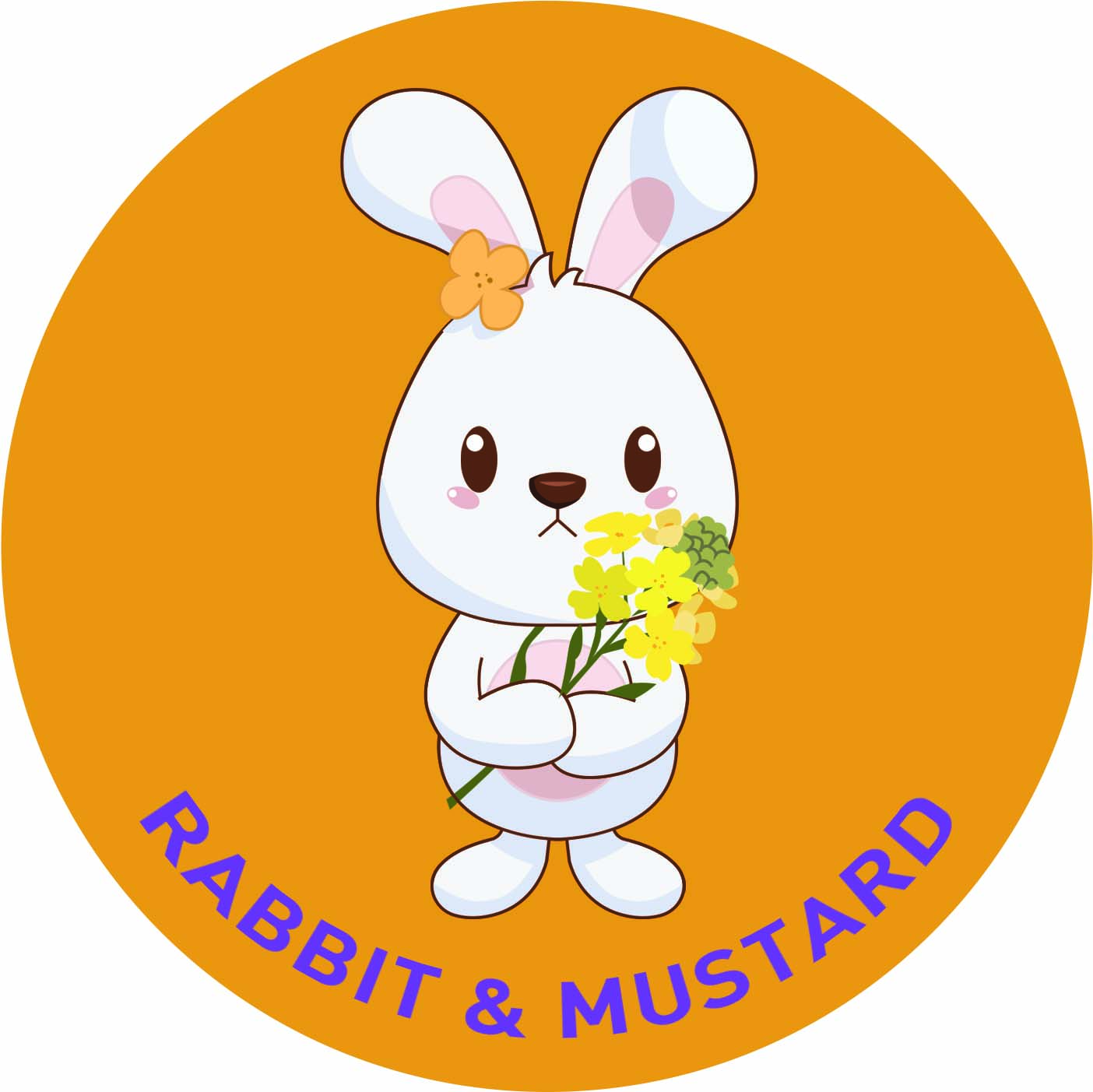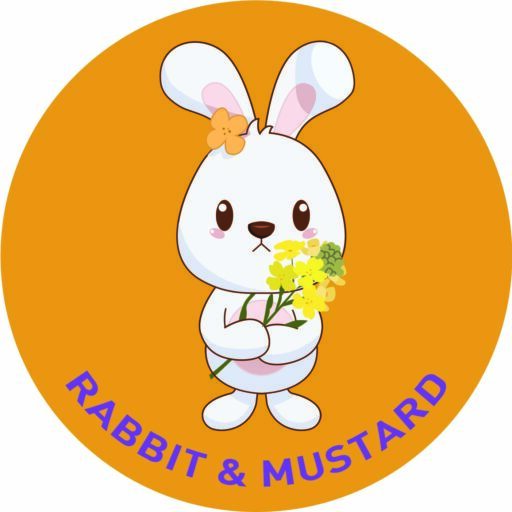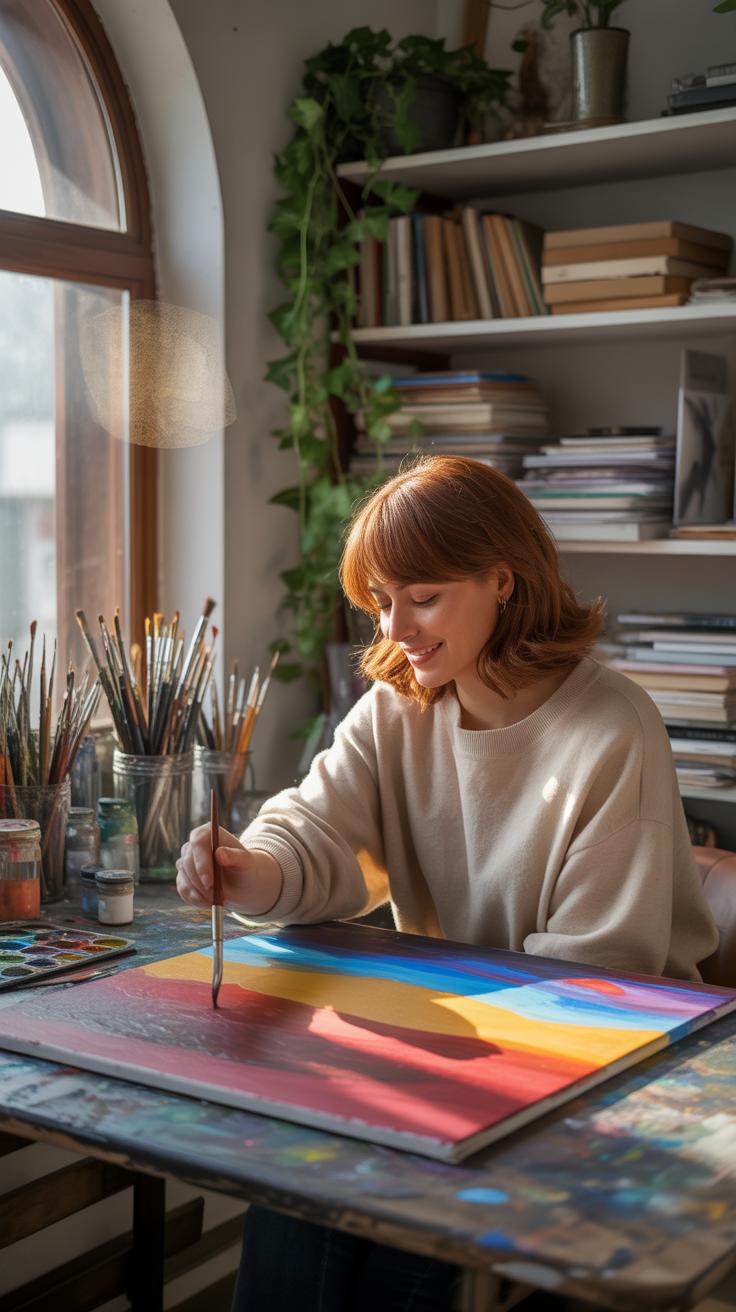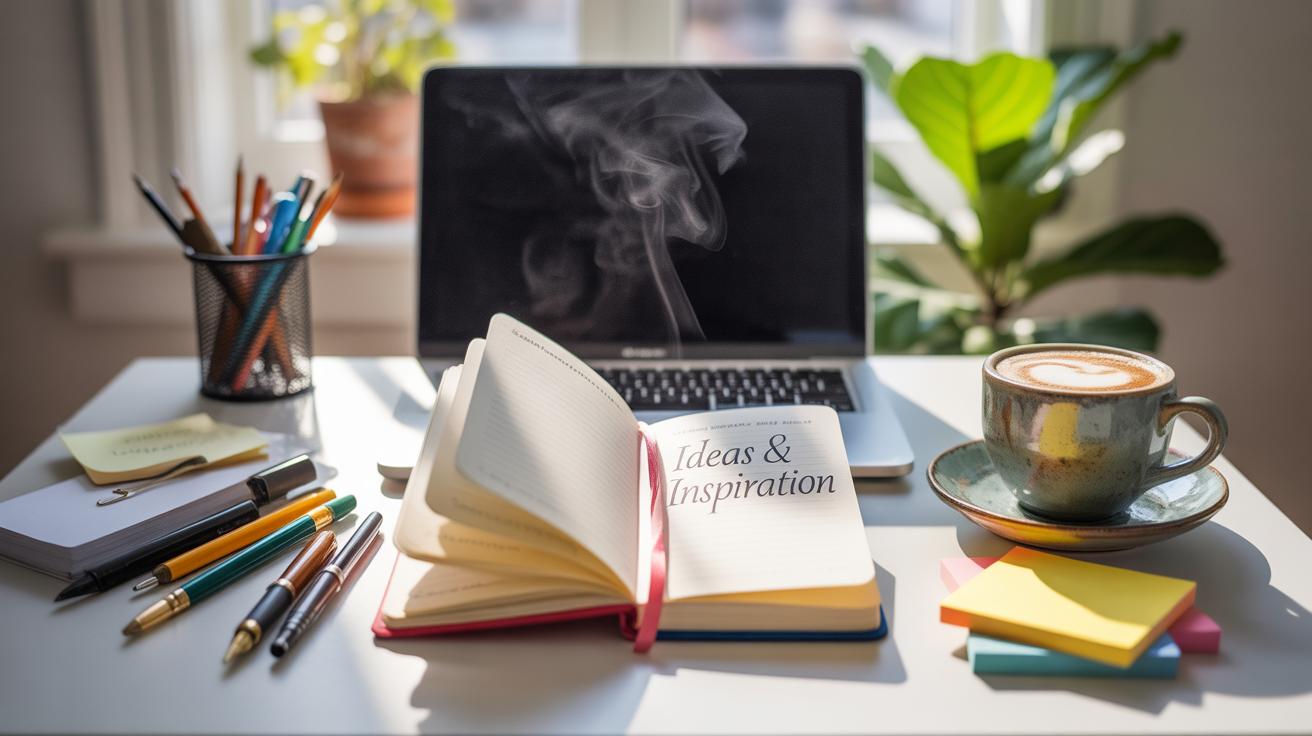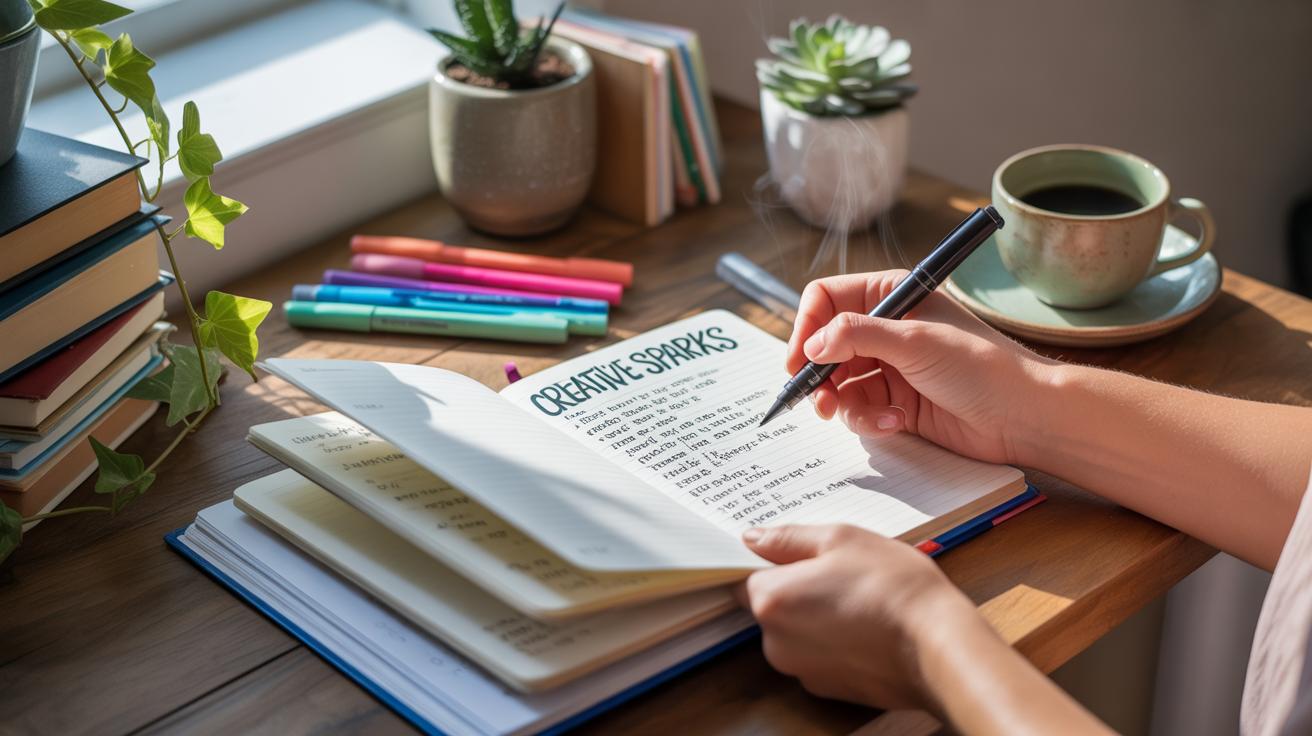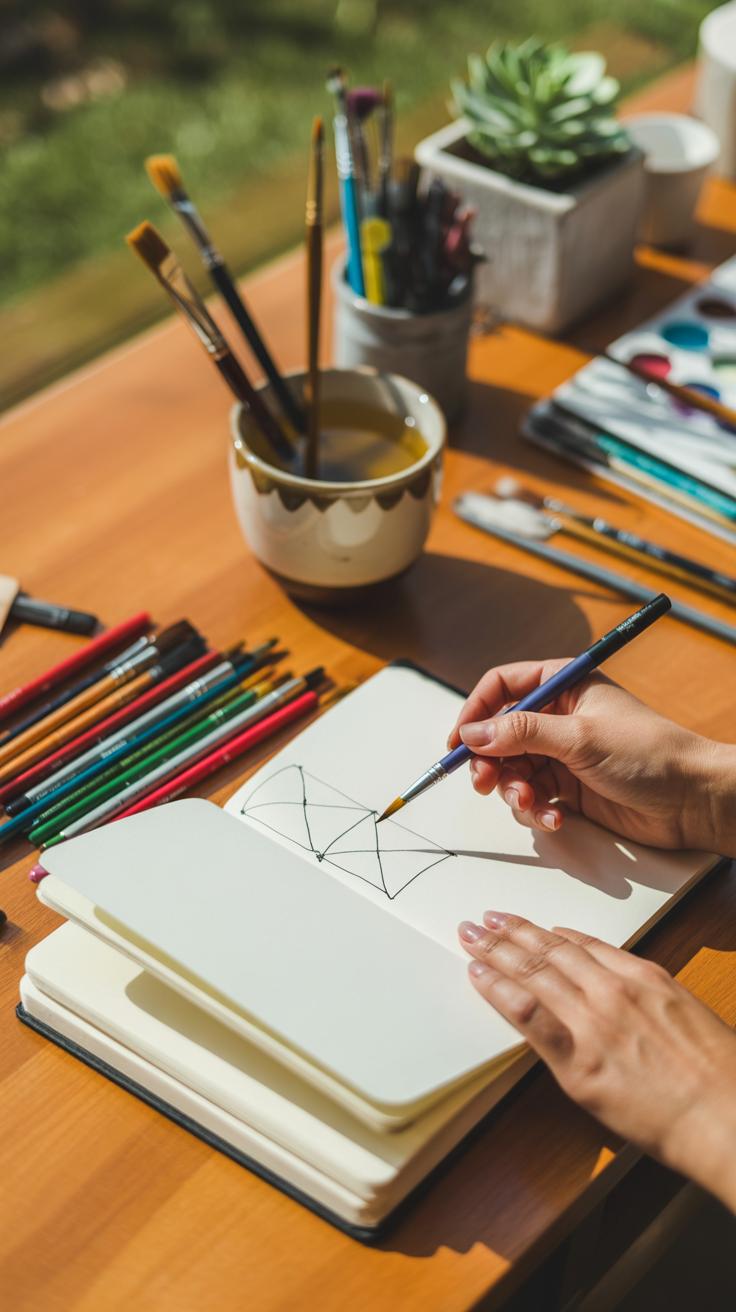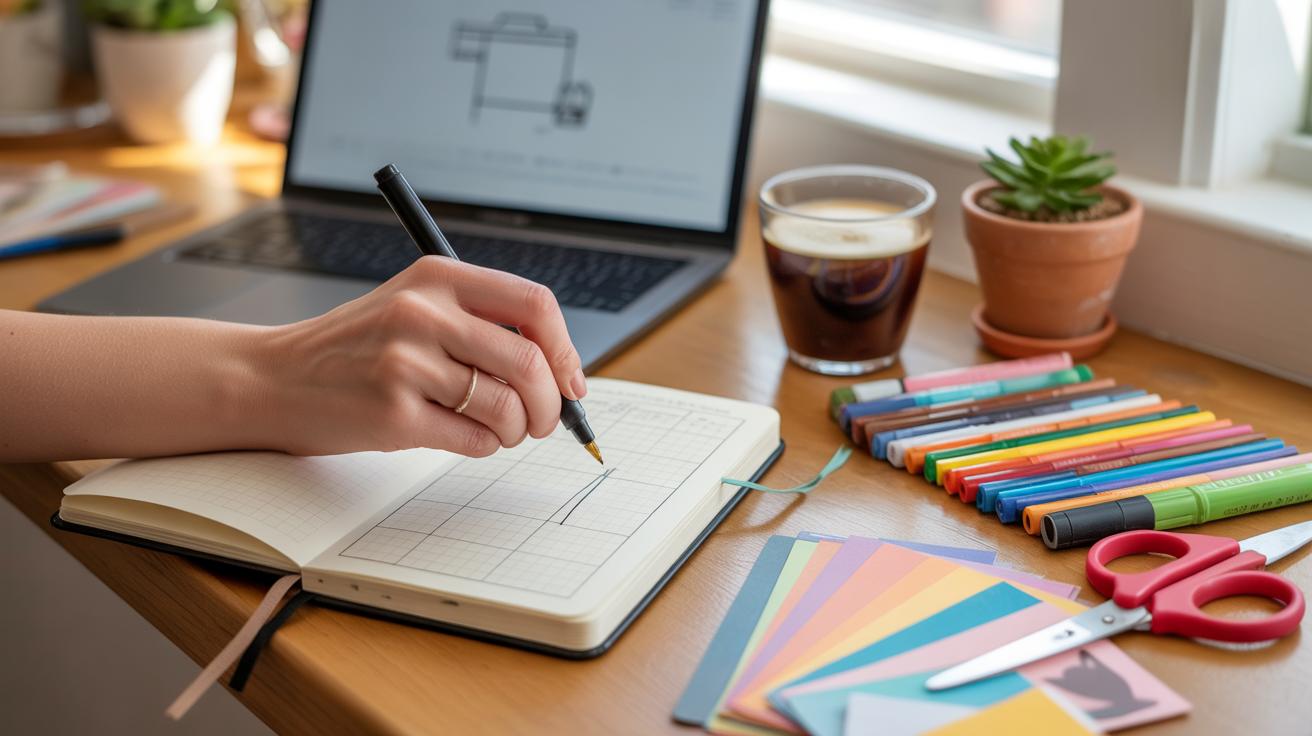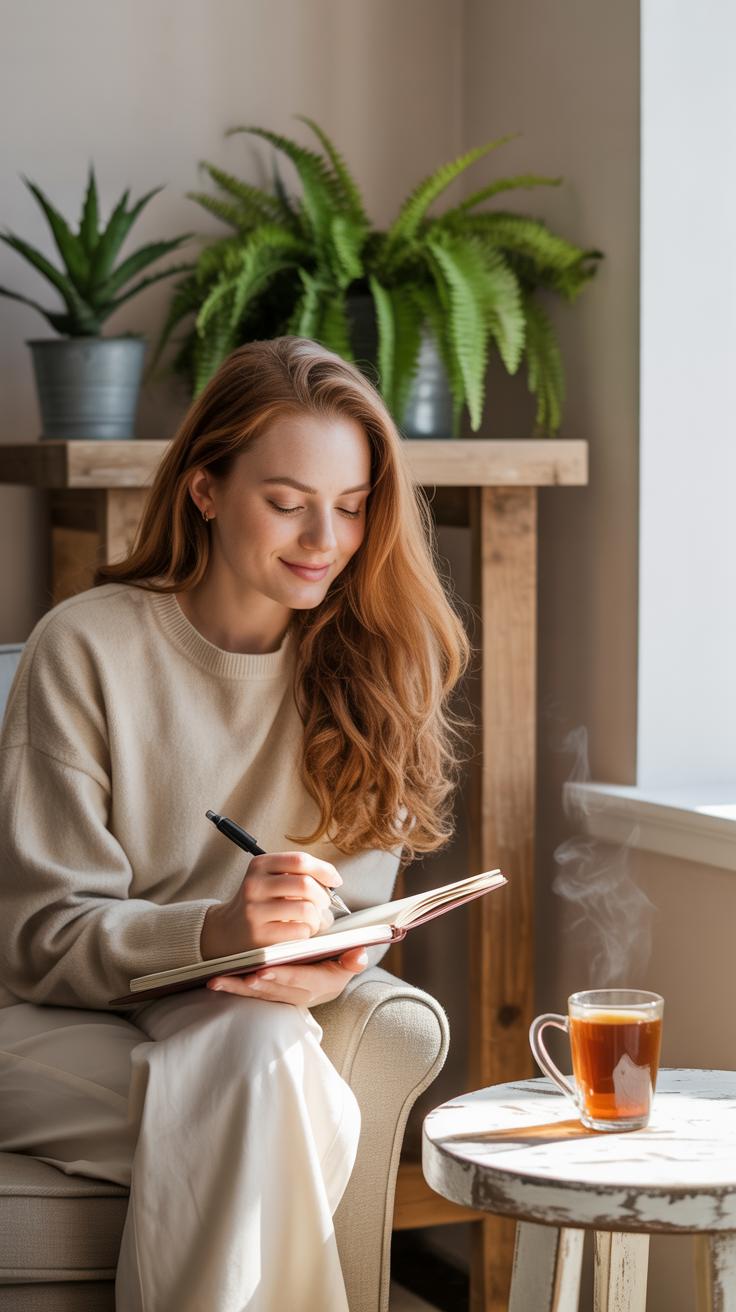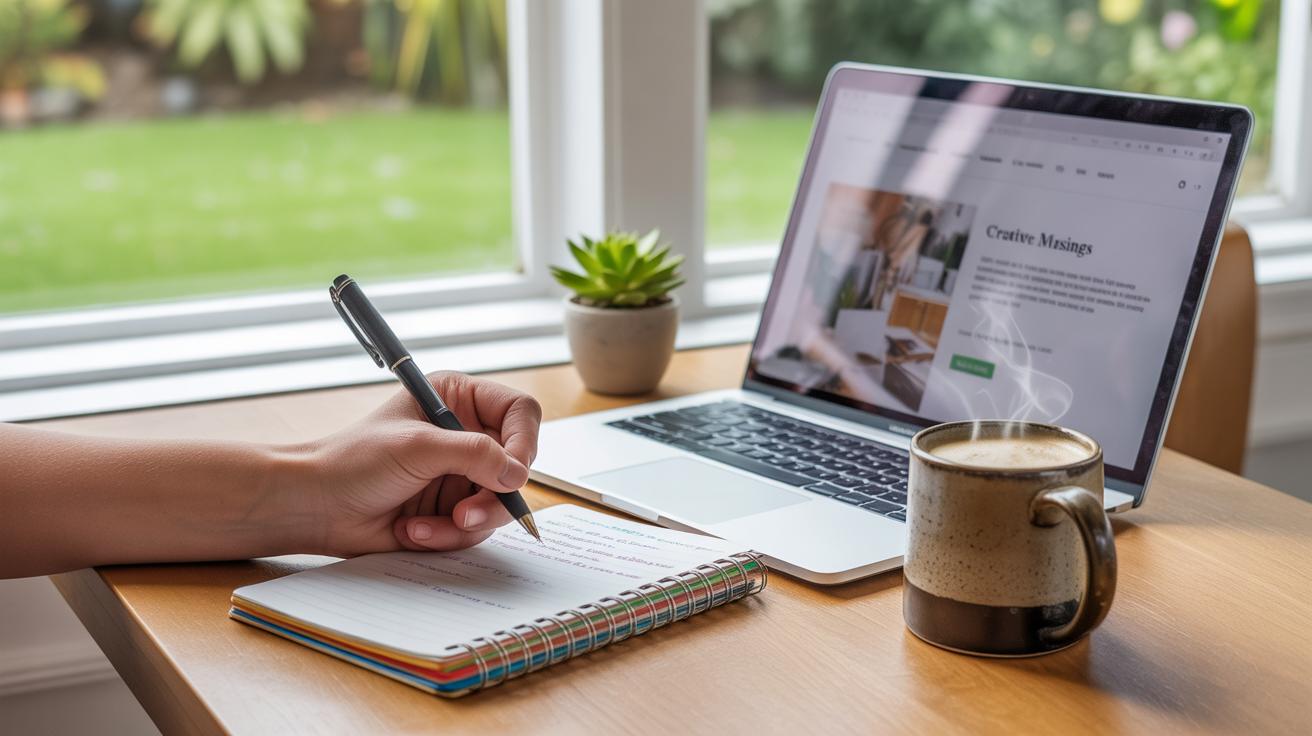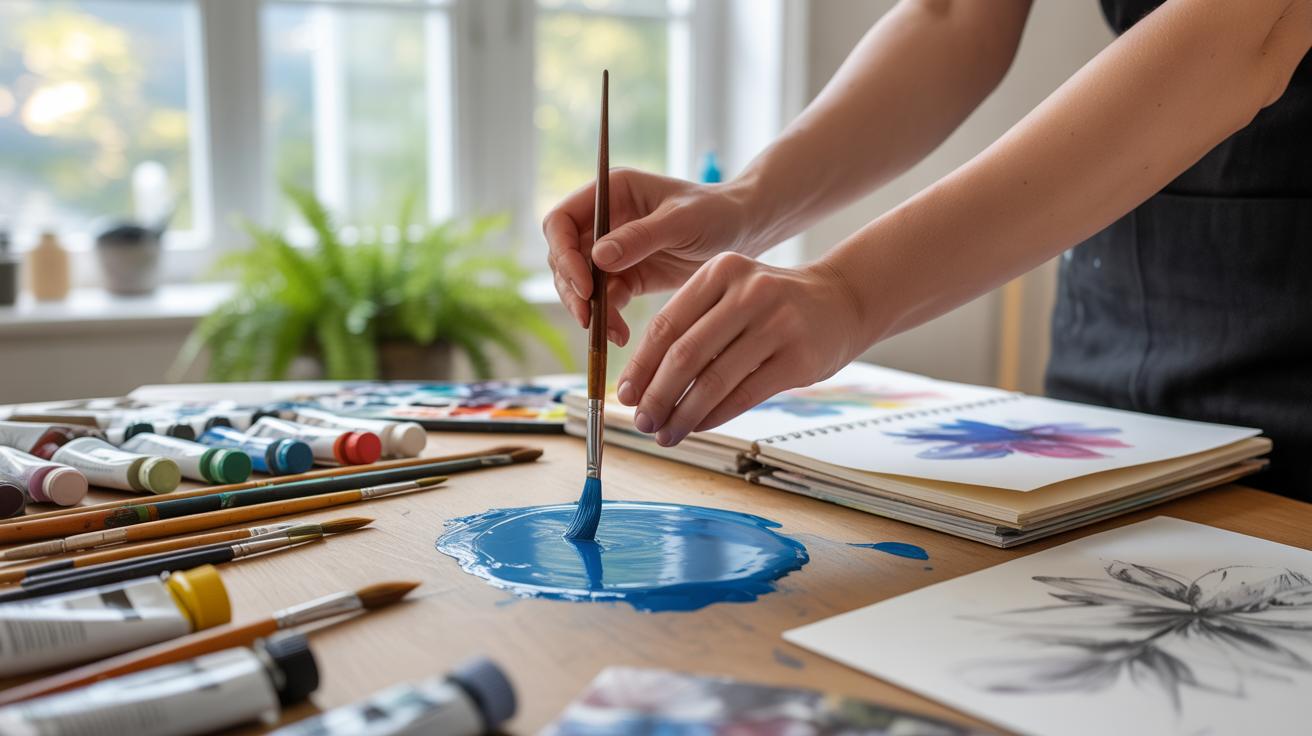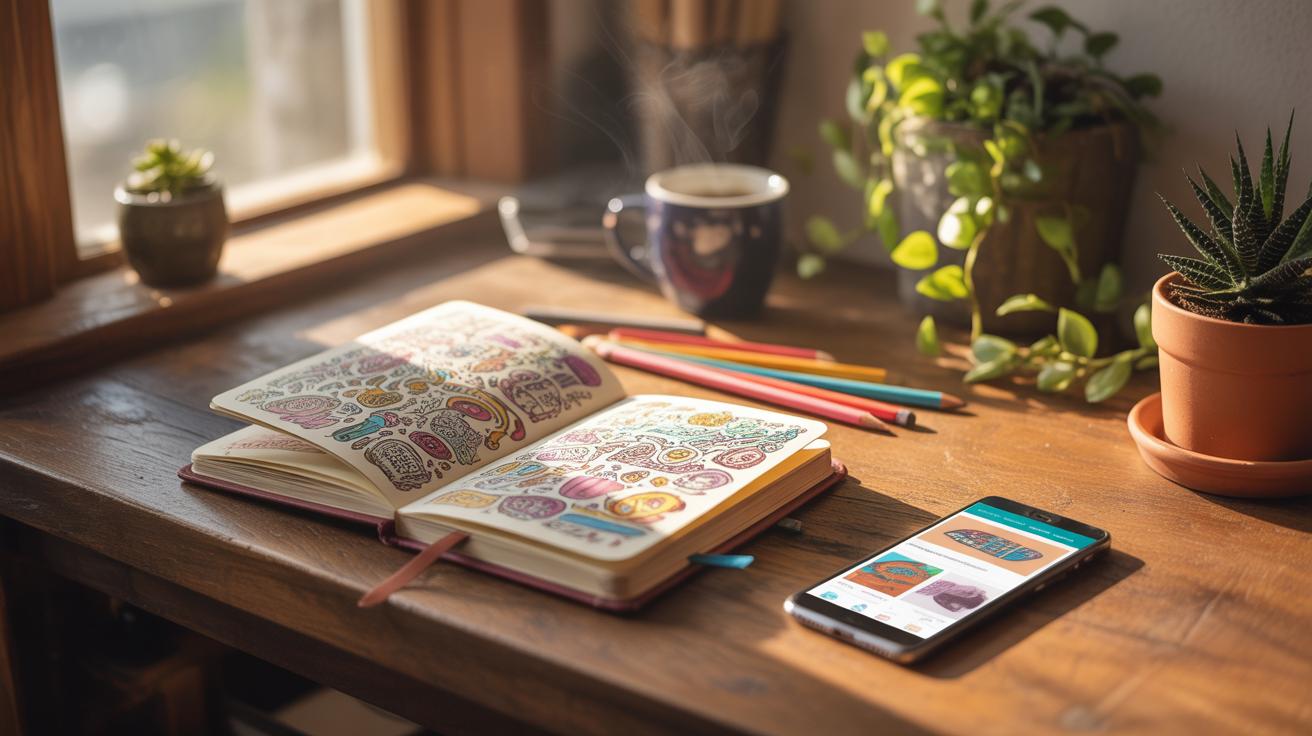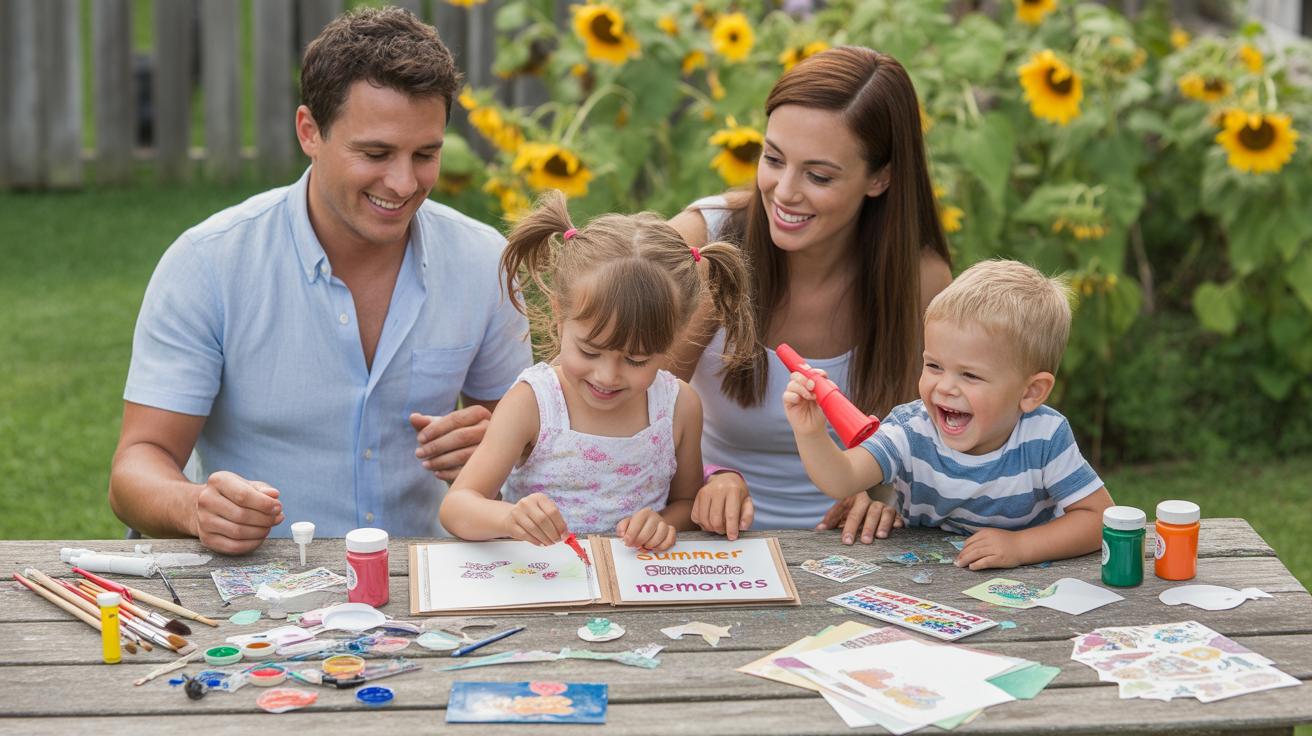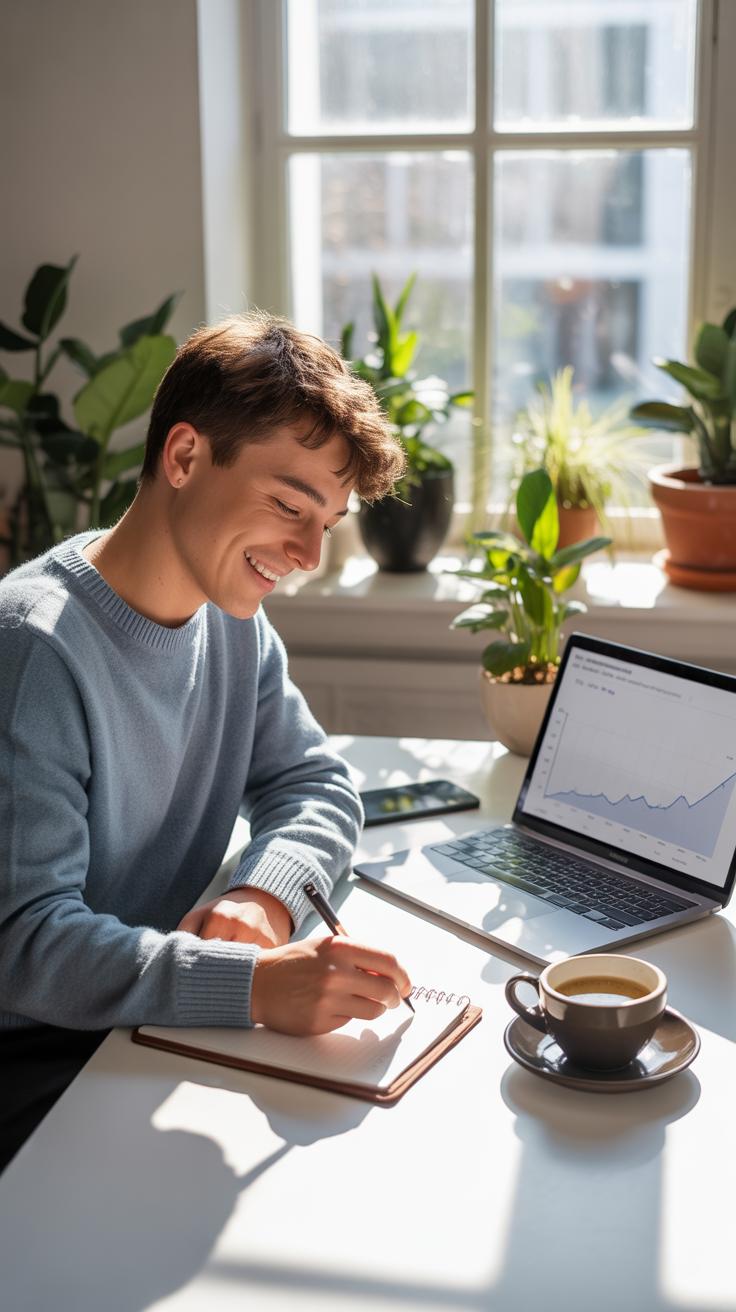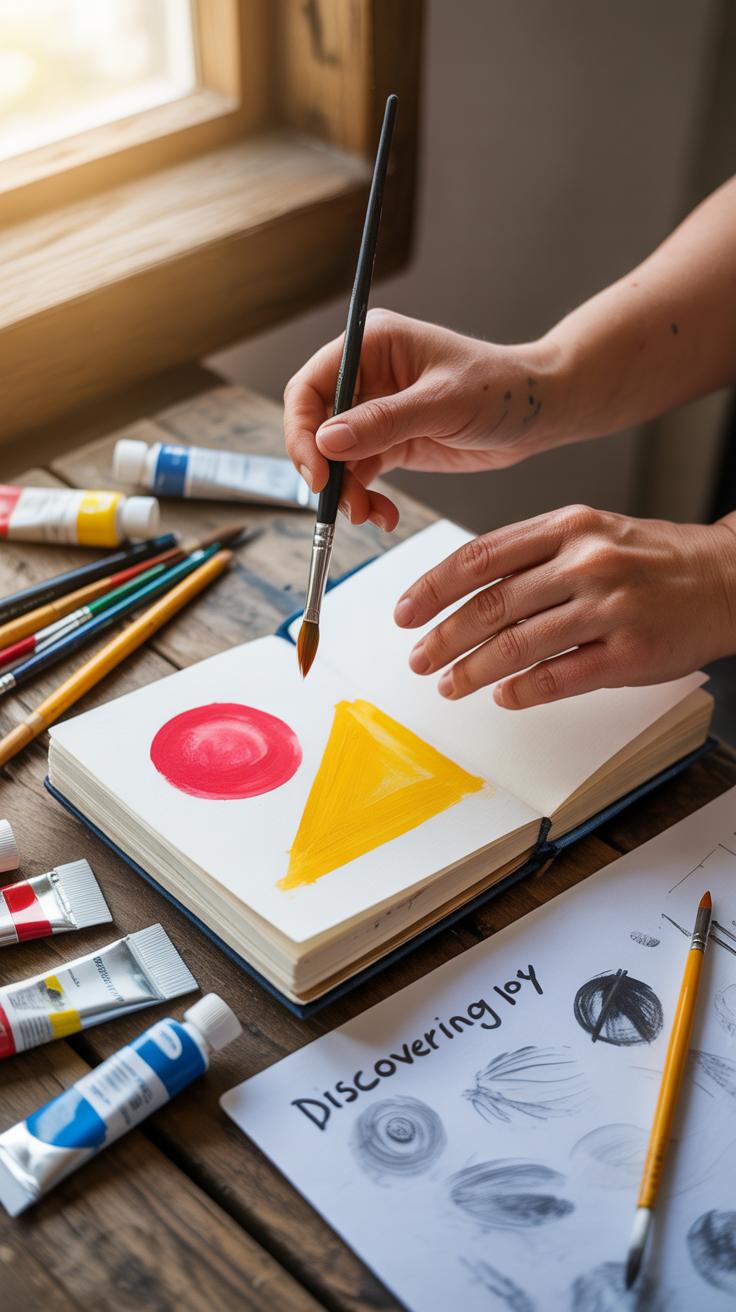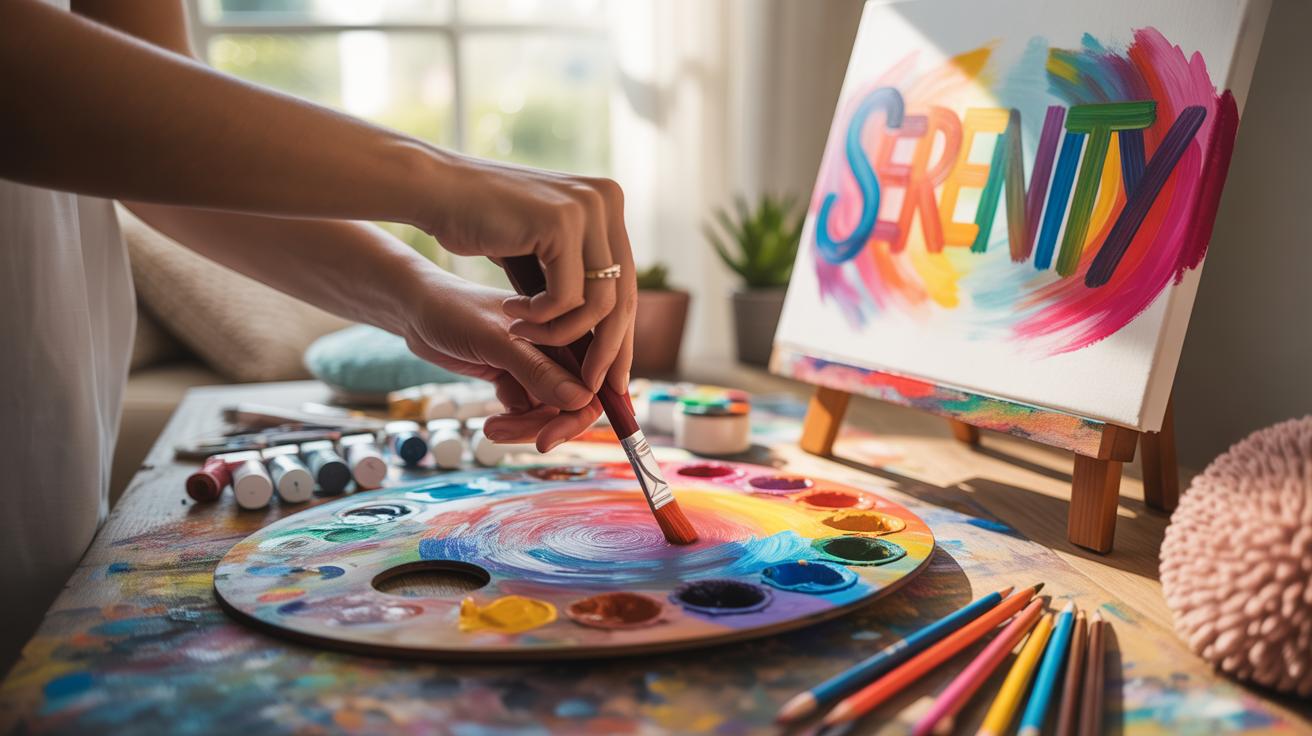
Art Journal Therapy Benefits for Emotional Wellbeing and Growth
Introduction
Art journal therapy blends the benefits of art and journal therapy to support your emotions and personal growth. It offers a creative way to express feelings that might be hard to say in words. When you put your thoughts and emotions into art and writing, you create a safe space where healing can start. This approach helps people understand themselves better and deal with difficult experiences in a new way.
In this article, we will explore the many ways art journal therapy helps with emotional wellbeing and personal growth. You will learn how this therapy works, what tools you can use, and how it can support your mental and emotional health. Understanding these benefits can help you decide if art journal therapy is right for you or someone you care about.
How Art Journal Therapy Supports Emotions
You might find it surprising how putting pen to paper and brush to canvas can help when feelings get overwhelming. Art journal therapy gives you a way to express emotions that words alone sometimes can’t capture. It’s not just about making pretty pictures or neat sentences — it’s about letting out what’s inside.
When you draw or paint in your journal, it can feel like releasing a weight. The colors, shapes, or even scribbles can mirror your mood without needing to explain much.
Writing alongside those images helps too. Sometimes, words help you make sense of feelings or memories you prefer not to face head-on. Writing can reveal patterns in your thoughts or bring hidden worries forward without overwhelming you.
- Combining art and words lets you explore emotions from different angles — seeing and feeling them.
- Creating a page can calm racing thoughts and reduce tension.
- Journaling offers a private space where difficult memories can be managed in your own time, gently.
It’s not always comfortable, though. Sometimes, the process stirs up strong feelings or confusion. But that discomfort itself can mean progress, a sign you’re touching something important.
Think about how you might draw a stormy sky when upset, then write a few lines about what’s causing the storm. That mix can open the door to understanding and relief.
So, art journal therapy isn’t a quick fix. Rather, it’s a way of sitting with yourself — the good, the bad, and the tangled — and learning to calm and sort your inner world little by little.
Expressing Feelings Creatively
Colors, images, words—they all act as messengers of your inner world. When you choose a color, maybe red, it can speak anger or urgency. Scribbles might represent chaos or confusion. Writing fragments or single words alongside your artwork helps clarify what’s going on inside, even if it’s murky or jumbled. The process of letting emotions out through creative means can bring relief you didn’t expect. It’s almost like the feelings get noticed and acknowledged without having to be perfectly explained.
Sometimes, you’ll find yourself surprised at what emerges on the page. A shape you never intended or a word you hadn’t thought about can suddenly feel meaningful. That unpredictability is part of why art journaling can be so cathartic. It invites you to drop control for a moment. Do you ever catch yourself feeling lighter or calmer after a session, even if the emotions you worked with were heavy?
Healing Emotional Wounds
Regular engagement with your art journal can gently support healing. Returning to your pages creates a quiet space where you can witness your growth and shifts in perspective. The wounds don’t heal in a straight line—some days, sadness or trauma feels fresh again. Other days, it feels more distant, like a faded bruise. This ebb and flow is normal, and the journal keeps a record of those changes.
Healing through art journaling isn’t about forgetting pain. It’s more about becoming familiar with it, perhaps even making peace with it little by little. You might look back at earlier entries and see how far you’ve come—even if it’s just a subtle difference in how you depict your feelings or the words you use. That, in itself, can bring hope. Do you find your journal becoming a kind of companion, one that witnesses your hardest moments without judgment?
Tools and Materials to Use
Choosing what to use for your art journal can feel overwhelming at first. But it doesn’t need to be complicated or pricey. Think about common materials like plain or textured paper, pens of different thicknesses, colored pencils, watercolors, and acrylic paints. Collage elements—like magazine clippings, old photos, fabric bits—can add texture and meaning. You might find that even simple ballpoint pens and scraps from around the house will do.
When selecting supplies, start with what feels approachable. You don’t have to buy every fancy marker or specialty paper out there. Something as basic as a notebook with smooth paper and a set of colored pencils might be just right for you. The key is availability and ease so you don’t get stuck waiting to find the “perfect” item.
Creating your art journal area can be part of the process too. Find a space that feels calm—even if it’s just a corner of your kitchen table. A comfy chair and good light make a difference. Some people like soft music or a candle to settle in. It’s about making your journal time something you look forward to, a little personal retreat. What do you need for that feeling? Maybe a small box to keep your tools handy, so you don’t have to hunt for supplies every time.
Starting Your Art Journal Practice
Beginning an art journal practice might feel a bit awkward at first. That’s normal. You don’t have to create masterpieces or perfectly crafted pages. The key is to just start—small, slow steps count.
Try some simple prompts to get going: write “Today I feel…” and fill in whatever comes to mind without overthinking it. Or, draw your safe place—a spot where you feel calm or protected. These exercises help you connect with your emotions gently.
Some other easy prompts you might try:
- List three things you noticed today.
- Sketch an object that caught your eye.
- Write about one small moment that made you smile.
There’s no need to judge what appears on the page. Your art journal isn’t about right or wrong. It’s about expression, even if it feels messy or unclear.
Setting a routine can make a difference. Try to reserve a few minutes daily or every other day just for your journal. This regular rhythm builds a habit, something you come back to naturally over time.
You might find the habit hard initially, or even forget sometimes. That’s okay—consistency isn’t perfection. The act of returning to your journal, even irregularly, can eventually open doors into your feelings and thoughts that you might not expect.
Building Emotional Awareness
Art journal therapy invites you to slow down and actually recognize what you’re feeling. Sometimes emotions sneak up or get tangled, but putting them on paper—even in messy sketches or a few words—makes them harder to ignore. You may start your page feeling anxious, unsure what’s causing it, then after mixing colors or doodling shapes, bits of meaning emerge. That process helps you see feelings clearly, almost like holding them up to the light.
Reflection is part of this too. When you revisit your entries, you connect dots between what you drew and how you felt inside. That connection builds a kind of inner dialogue, even if just between you and the page. You might find yourself surprised by what pops up, or puzzled because feelings don’t always fit neatly into words or images. It’s okay to sit with that discomfort—sometimes it’s the place where real understanding begins.
When emotions start to come into focus this way, your art journal becomes a mirror—not perfect, not complete—but one that lets you meet yourself bit by bit.
Recognizing Emotion Patterns
Your art journal can reveal emotions that repeat or resurface over time. Maybe every week you sketch stormy skies when something feels off or write certain words when stress shows up. These patterns aren’t always obvious day to day, but looking back helps you spot triggers or moods that recur.
Try noticing the following:
- Which colors or shapes appear often when you’re upset or joyful?
- Are there particular words you tend to write during hard moments?
- Do certain images relate to specific people or situations?
Journaling emotions this way isn’t about labeling yourself but about paying attention. Over time, it’s easier to anticipate how you might react or to prepare for challenges with a little more awareness.
Connecting Art with Your Feelings
Colors, shapes, and words in your journal aren’t random—they can hint at what’s going on inside. Maybe jagged lines express frustration better than a sentence. Or a swirl of blue reflects sadness without needing explanation.
Try to stay open to whatever forms appear. You might notice that warm colors come out when you feel hopeful, or a tight circle grows when you’re overwhelmed. Words help too—but sometimes images say what language can’t quite reach.
This connection between your inner world and your art gives you a way to express complex thoughts and emotions without worrying about making sense. It’s a chance to explore feelings with curiosity instead of judgment, which can be surprisingly freeing.
Growth Through SelfReflection
Taking time to look back at your art journal can feel a little uncomfortable, especially if you’re honest with yourself. But honesty is exactly what makes self-reflection powerful. When you’re willing to face the feelings behind the colors, shapes, and words, you start to notice patterns you might have missed otherwise. Maybe you realize a recurring sadness or a spark of hope you hadn’t acknowledged fully before.
Reflect on how each entry captures a moment of your emotional state—not just the obvious ones, but also the subtle shifts. Sometimes, the feelings you thought were clear become more complex as you revisit them. You might feel puzzled, or even frustrated. That’s okay. It shows you’re digging beneath the surface, exploring your emotions more deeply.
Here’s a way to approach reviewing your journal:
- Set aside some uninterrupted time with your journal.
- Notice any emotions that come up as you look at previous pages.
- Ask yourself what those entries reveal about your emotional journey.
- Think about changes—have you felt differently about certain issues over time?
Seeing your progress isn’t always straightforward. Sometimes growth feels slow or uneven. But those shifts matter. They help you recognize what has moved, what still needs attention, and where you might want to head next emotionally.
From these insights, you can start setting emotional goals. Not vague wishes like “be happier,” but specific intentions such as, “express frustration calmly,” or “allow myself to feel sadness without judgment.” Your journal becomes a practical map, guiding you toward small, realistic steps for wellbeing.
Remember, growth isn’t a straight line. Your willingness to return honestly to your art and feelings decides how much you get out of it—and that willingness might fluctuate from day to day. That’s perfectly natural.
Therapeutic Benefits Backed by Research
You might wonder why art journal therapy has been gaining more attention in mental health circles. Research shows it’s more than just a creative outlet—it actually has solid effects on emotional wellbeing.
For instance, studies focusing on stress reduction indicate that engaging in art journaling lowers cortisol levels, the hormone tied to stress. When people express their feelings visually and through words, it seems to ease feelings of anxiety. I’ve read about one trial where participants reported calmer moods after just a few weeks of regular journaling with art, which felt quite striking.
There’s also evidence about self-esteem. People exploring their identity through art and journaling often find new ways to view themselves. By reflecting on these personal creations, they may gain confidence. And the process can bring forward memories or emotions that were hidden or difficult to express, opening doors for healing.
Studies of trauma survivors using art therapy reveal these tools help process painful experiences. The combination of drawing and writing creates a safe space to confront trauma in a way traditional talk therapy might not.
Improving Mental Health
Multiple clinical studies explore anxiety and depression, showing art and journal therapy lower symptoms more than expected. One example included people with moderate depression who kept daily art journals—they reported better moods and reduced hopelessness over time.
The act of putting feelings on paper or canvas offers a form of release, which might explain why anxiety symptoms improve. It’s not always about “fixing” the problem but just being able to witness and externalize difficult emotions. That alone, it seems, can shift burdensome thoughts and reduce mental strain.
Supporting Physical Health
It might surprise you, but expressing emotions through art links to physical health too. Research shows that emotional expression reduces inflammation and boosts immune response. Stress and bottled-up feelings negatively impact the body, so releasing them visually or in writing can promote overall wellness.
For example, some studies found people with chronic illnesses who kept art journals experienced less pain and better sleep. This suggests that art journal therapy isn’t just “nice to have,” but could actually play a role in managing bodily symptoms linked to emotional stress.
In the end, the research doesn’t paint a perfect picture—results vary, and not everyone reacts the same way. Still, if you’re looking for a way to nurture both your mind and body, art journaling offers promising support worth trying out.
Incorporating Art Journal Therapy Daily
Fitting art journal therapy into a busy day can feel tricky, but it doesn’t have to be a big production. Even a few minutes can make a difference. Maybe start with a simple habit: doodle or write a line about your current mood during breakfast or right before bed. It doesn’t need to be perfect or detailed—sometimes, quick sketches or color scribbles can express what words can’t.
Think about keeping your art journal somewhere visible. A bedside table or your work desk can serve as a gentle reminder. If mornings are rushed, try carving out a moment during a lunch break, or even waiting in line for your coffee. Five minutes is enough to capture a snapshot of your feelings.
Adapting the practice is key. Some days might call for messy, expressive pages. Others, you might prefer neat, structured entries. There’s no single “right” way. The goal is to make this space yours, flexible to your rhythms rather than an added task.
Quick Art Journal Sessions
Short bursts of art journaling can be surprisingly grounding. If you only have three to five minutes, focus on something simple:
- Draw a shape or pattern that reflects your mood.
- Write a word or phrase you’re holding onto today.
- Use color to represent your current energy.
- Sketch an object in your environment with minimal detail.
This kind of brief session can interrupt a stressful day with calm. It’s less about producing art and more about tuning in to yourself. Sometimes these quick moments build momentum for longer, more thoughtful entries later.
Using Art Journals in Therapy
Art journals can be a helpful companion alongside professional mental health support. Sharing pages with your therapist may open new doors in understanding your emotions. Visuals sometimes communicate what’s hard to say aloud, offering a fresh perspective.
If you’re in therapy, try bringing your art journal as a tool to explore topics. You can create images or write down reflections between sessions to discuss later. Therapists might also suggest prompts or guide you in using your journal to track progress or triggers.
Still, some days you might not want to share your journal—and that’s okay. Art journaling is an intimate act; you set the boundaries. Think of it as another way to engage with therapy rather than replace it. Have you ever noticed how an image can reveal feelings you didn’t know were there? That’s the kind of insight these journals can bring, especially with support.
Conclusions
Art journal therapy offers a practical and personal path to better emotional wellbeing. By combining art and reflective writing, you engage with your feelings creatively and thoughtfully. This process makes emotions easier to handle and helps you grow. Many people find that regularly making art journals builds self-awareness and reduces stress.
You can start art journal therapy on your own or with a professional guiding you. The key is to keep expressing yourself honestly and openly. Over time, art journaling can help you feel more balanced and confident. Consider including this therapy in your routine to support your mental health and personal growth.
